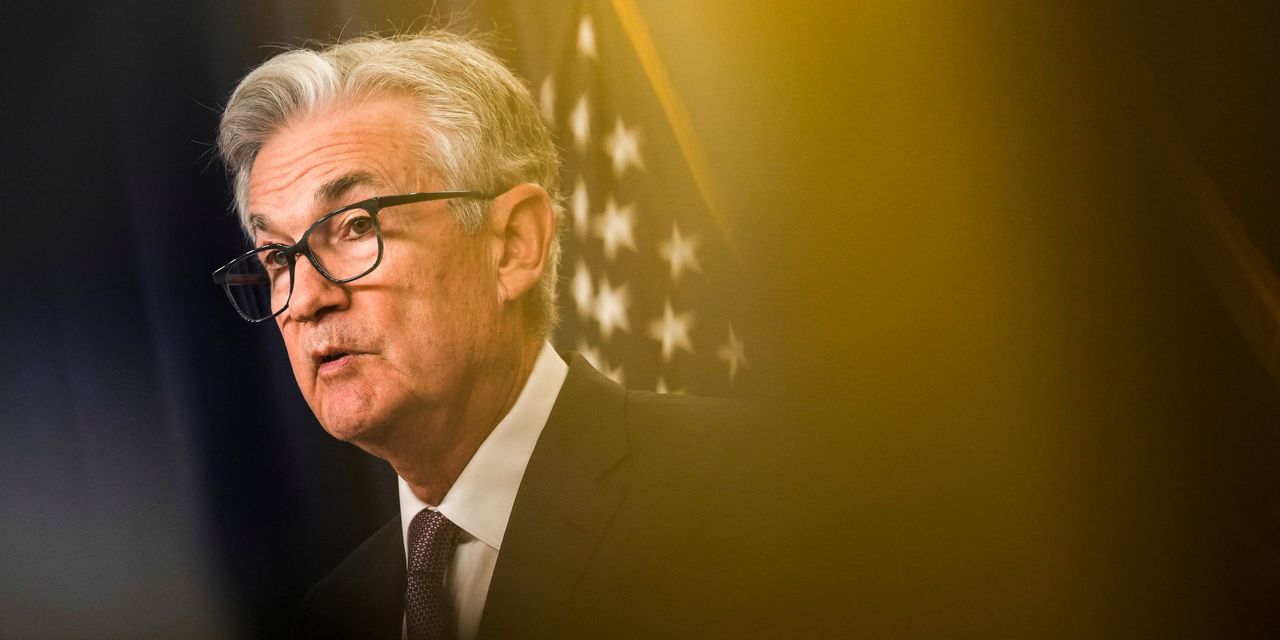It took stock-market investors a while to make up their minds, but when the closing bell sounded on Wednesday it was clear they didn’t like what they had heard from the Federal Reserve and its chairman Jerome Powell.
See: Fed approves third large interest rate hike and signals more before year-end
Central bankers also penciled in another 125 basis points in rate hikes by year end, which would bring the benchmark interest rate to a midpoint of 4.4% by the end of the year, plus a “terminal” rate — or peak — at 4.6% in 2023. They don’t expect any rate cuts until 2024.
Analysts said the projections and Powell’s comments drove home the same message that the Fed chair delivered in a speech at a monetary policy symposium in Jackson Hole, Wyoming, in late August: the Fed intends to keep tightening until it gets inflation under control.
“He’s clearly intent on showing the market that he means what he says, that he’s not going to blink,” said Mel Casey, senior portfolio manager at FBB Capital Partners, in a phone interview. “He’s not going to worry about what the market does. For too long people have considered that that is a concern as well, but the concern here is inflation.”
See: Can the Fed tame inflation without further crushing the stock market? What investors need to know.
The Dow Jones Industrial Average
DJIA,
booked a fall of over 500 points, or 1.7%, to end at 30,183.78. The S&P 500
SPX,
fell 1.7%, to 3,789.93. The Nasdaq Composite
COMP,
dropped 1.8%, finishing at 11,220.19.
“We will keep at it until the job is done,” Powell said in a news conference after the release of the Fed’s policy statement and the economic projections. “I wish there were a painless way to do that. There isn’t.”
The August consumer price index report released earlier this month found inflation had spread more broadly through the economy, with the year-over-year rate slowing less than expected to 8.3%. In his Jackson Hole speech, Powell warned that the economy and household would experience “some pain” as a result of the bank’s more aggressive effort to roll back inflation.
“I believe they’re doing what is to be done,” said Guido Petrelli, founder and CEO of Merlin Investor. “What I don’t see as a good sign from the meeting is that they postponed the time when inflation is going to peak, so everything has been prolonged.”
FBB’s Casey compared investor reaction to the five stages of grief — denial, anger, bargaining, depression and acceptance.
“We’re trying to get to acceptance,” he said, after bouts of “hopefulness” that have emerged during market bounces earlier this year, particularly as the S&P 500 rallied around 17% off its June low ahead of Powell’s Jackson Hole speech.
Read: Fed predicts big slowdown in economy and rising unemployment as it battles inflation
“No one knows whether this process will lead to a recession or if so how significant that recession would be,” Powell said in the news conference. “That’s going to depend on how quickly wage and price inflation pressures come down, whether expectations remain anchored and also if we get more labor supply.”
He added that the chances of a soft landing will diminish if policy needs to get more restrictive for the Fed to reach its goal of 2% inflation.
But according to Casey, the chances of soft landing are getting slimmer because CPI numbers have been “stubborn and sticky”.
“We had a lot of rate increases, and we’ve done really fast in the last three meetings,” he said. “We’ve yet to really see anything show up in the numbers yet. That payoff has yet to be observed.”
Trading across other financial markets was choppy after the release of the data. The yield on the 2-year Treasury
TMUBMUSD02Y,
rose to the highest since Oct. 2007, according to Dow Jones Market Data. The yield on the 10-year Treasury
TMUBMUSD10Y,
was 3.511%, down 5 basis points.
Gold for December delivery
GCZ22,
GC00,
rose $4.60, or 0.3%, to settle at $1,675.70 an ounce on Comex. The ICE U.S. Dollar Index
DXY,
a gauge of the dollar’s strength against a basket of rival currencies, advanced 1%, after Russian President Vladimir Putin ordered reservists to mobilize and made remarks seen as a threat to use nuclear weapons, as he escalated the war in Ukraine.
See: Fed’s tough task: History shows inflation takes average of 10 years to return to 2%
